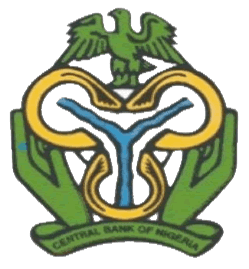Financial Inclusion
Development Financing | Activities | Agric Credit | Commodity Surveillance | Microfinance | SMEEIS | Refinancing & Rediscounting Scheme | Infrastructure Finance | Newsletter | Microfinance Advisory Board | Financial Inclusion | Financial Literacy | Youth Entrepreneurship Development Programme
Financial inclusion has continued to assume increasing recognition across the globe among policy makers, researchers and development oriented agencies. Its importance derives from the promise it holds as a tool for economic development, particularly in the areas of poverty reduction, employment generation, wealth creation and improving welfare and general standard of living.
A survey conducted in Nigeria in 2008 by a development finance organization, the Enhancing Financial Innovation and Access revealed that about 53.0% of adults were excluded from financial services. The global pursuit of financial inclusion as a vehicle for economic development had a positive effect in Nigeria as the exclusion rate reduced from 53.0 % in 2008 to 46.3 % in 2010. Encouraged by the positive development, the Central Bank of Nigeria in collaboration with stakeholders launched the National Financial Inclusion Strategy on 23rd October, 2012 aimed at further reducing the exclusion rate to 20% by 2020. Specifically, adult Nigerians with access to payment services is to increase from 21.6% in 2010 to 70% in 2020, while those with access to savings should increase from 24.0% to 60%; and Credit from 2% to 40%, Insurance from1% to 40% and Pensions from 5% to 40%, within the same period.
The channels for delivering the above financial services were equally targeted to improve, with deposit money bank branches targeted to increase from 6.8 units per 100,000 adults in 2010 to 7.6 units per 100,000 adults in 2020, microfinance bank branches to increase from 2.9 units to 5.5 units; ATMs from 11.8 units to 203.6 units, POSs from 13.3 units to 850 units, Mobile agents from 0 to 62 units, all per 100,000 adults between 2010 and 2020.
The targets were based on bench marking exercise carried out with peer countries, while also taking into consideration critical growth factors in the Nigerian environment.
The major tools for driving the Strategy include the following:
- Agent Banking
- Tierred Know-Your-Customer Requirements
- Financial Literacy
- Consumer Protection
- Linkage Banking
- Implementation of the MSME Development Fund
- Credit Enhancement Programmes such as
- Agricultural Credit Guarantee Scheme (ACGS)
- Commercial Agricultural Credit Scheme (CACS)
- Nigeria Incentive-Based Risk Sharing System for Agricultural Lending (NIRSAL)
- Refinancing and Rediscounting Facilities for SMEs
- Small and Medium Enterprise Credit Guarantee Scheme
- Entrepreneurship Development Centres
The Central Bank of Nigeria has released the framework for the following:
- Agent Banking
- Know Your Customer Requirements
- MSME Development Fund
- Financial Literacy
- Mobile Money Operation
The Bank is working on the framework for consumer protection and has set up a Financial Inclusion Secretariat to coordinate the implementation of the Strategy.
The Strategy is being pilot tested in Borno State in collaboration with the State Government and other stakeholders. Meanwhile, some key stakeholders are taking advantage of the opportunities it offers to roll out products and innovation to actualize their corporate aims and objectives.
The implementation of the Strategy is impacting positively on the rate of access to financial services. The adult exclusion rate reduced from 46.3% in 2010 to 39.7% in 2012. All the geopolitical zones in Nigeria equally recorded improvements with exclusion rate declining between 2010 and 2012 as follows: North East, 68.3% to 59.5%, North West, 68.1% to 63.8%, North Central, 44.2% to 32.4%, South East, 31.9% to 25.6%, South West, 33.1% to 24.8% and South South, 36.4% to 30.1%.
Click here to see frequently asked questions on Development Finance

 Flickr
Flickr Instagram
Instagram LinkedIn
LinkedIn